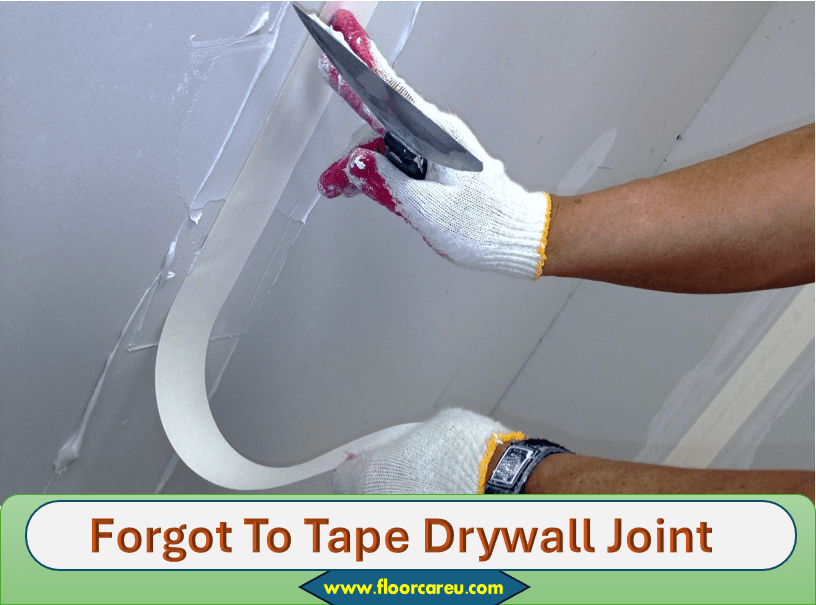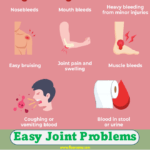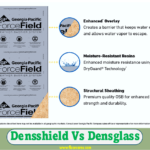Forgot To Tape Drywall Joint: Forgot to tape drywall joint? Without tape, the joint compound is weak and prone to cracking.
Ensuring proper drywall taping is crucial for a smooth and durable surface when finishing a room. Failed to tape a drywall joint? Do not panic. This common mistake can be rectified with the right approach. Whether it’s a forgotten seam or a missed step, addressing the issue promptly is key to preventing future complications.
This guide will explore effective methods to fix an untaped drywall joint, ensuring a professional and long-lasting finish. You can remedy the situation with the right tools and techniques and achieve a seamless drywall finish. Let’s delve into the steps to correct the overlooked drywall joint and achieve a flawless result.

Common Mistakes In Drywall Installation
When it comes to drywall installation, one common mistake is forgetting to tape the drywall joint. This can lead to weak bonds and cracks in the joint compound, causing potential issues. It is essential to ensure that all drywall seams have tape embedded in the joint compound for a stronger and more durable finish.
Effects Of Forgetting To Tape A Drywall Joint
Forgetting to tape a drywall joint can have several negative effects on the wall’s overall appearance and structural integrity. The joint is vulnerable to cracks and separation without proper taping, leading to an unsightly and uneven surface. Additionally, the lack of proper taping can compromise the durability and strength of the drywall, potentially leading to more extensive repairs in the future.
Importance Of Proper Drywall Taping
Proper drywall taping is crucial for ensuring the walls’ smooth and seamless finish. Taping not only provides structural support to the joints but also prevents the occurrence of cracks and fissures, ensuring the longevity of the drywall. Additionally, correct taping techniques contribute to the overall aesthetic appeal of the space, creating a professional and polished appearance.
Impact On Drywall Without Proper Taping
Neglecting to tape drywall joints can make weak joints susceptible to cracking and separation. The absence of tape affects the bond strength of the joint compound, potentially causing cracks when the house experiences movement. Proper taping is crucial to ensure the stability and durability of drywall installations.
Risk Of Cracks And Weak Joint Bonds
Proper taping is essential for a sturdy and long-lasting finish when it comes to drywall installation. Without proper taping, the impact on drywall can be significant. Without drywall tape, the only thing keeping the joint together is the very weak bond of the joint compound. As houses flex and settle over time, even the slightest movement can cause the joint compound to crack between the drywall sheets. This compromises the wall’s structural integrity and creates unsightly cracks that can be difficult and costly to repair.
Difficulty In Repairing Untaped Joints
Repairing untaped joints can be frustrating and time-consuming. When a joint is not properly taped, achieving a smooth finish becomes much harder. The absence of drywall tape leaves behind uneven surfaces and irregularities, making it challenging to apply joint compounds and achieve a seamless transition between the different sections of the wall.
Not only does the absence of drywall tape make it difficult to achieve a professional-looking finish, but it can also lead to an increased risk of future cracks and damage. Without the reinforcement provided by tape, the joint compound alone is not enough to withstand the natural movement and settling of the house. As a result, untaped joints are more prone to developing cracks and separating over time.
Additionally, when it comes to repairing untaped joints, the process becomes more complicated. Fillers and patching compounds alone are insufficient to reinforce and restore the strength of the joint properly. The lack of tape makes it challenging to create a strong bond between the old and new layers of the joint compound, leading to a higher likelihood of patch failure and the need for additional repairs.
In conclusion, forgetting to tape drywall joints can harm the finished wall’s overall integrity and appearance. The risk of cracks and weak joint bonds increases, making the wall more susceptible to damage. Additionally, the difficulty in repairing untaped joints adds to the inconvenience and expense of correcting the mistake. Therefore, it is crucial to ensure proper taping techniques during drywall installation to avoid these issues and achieve a professional result.
Repairing Drywall Joints
Repairing drywall joints without tape can lead to weak bonds, causing cracks when the house flexes. Ensure that tape is embedded in the joint compound for reinforced strength and durability in your drywall seams. Don’t skip this crucial step to avoid potential issues with your drywall joints.
Removing Old Compound Over Untaped Joints
If you have forgotten to tape a drywall joint, don’t panic. It’s a common mistake, but it’s important to address it properly to ensure a strong and seamless finish. The first step in repairing untaped joints is to remove the old compound that may have been applied over the joint. This will provide a clean surface for applying a new joint compound.
- Start by carefully cutting away the old compound along the joint with a utility knife or a drywall saw, taking care not to damage the surrounding drywall.
- Once the old compound is removed, use a sanding block or sandpaper to smooth out the edges of the joint. This will create a smooth transition between the two drywall sheets.
- Clean the area thoroughly to remove any dust or debris. A clean surface is essential for proper adhesion of the new joint compound.
Applying a New Joint Compound
Now that you have prepared the untaped joint, it’s time to apply a new joint compound to create a strong bond and a seamless finish.
- Start by mixing the joint compound according to the manufacturer’s instructions. It should have a smooth, creamy consistency.
- Using a putty knife, apply a thin layer of joint compound over the entire length of the untaped joint. Smooth it evenly, feathering the edges to blend with the surrounding drywall.
- Allow the first layer to dry completely. Depending on the humidity and temperature in the room, this may take several hours or overnight.
- Once the first layer is dry, lightly sand it to remove imperfections. Wipe away the dust with a damp cloth.
- Apply a second layer of joint compound, extending it slightly beyond the edges of the first layer. Feather the edges again for a seamless transition.
- Allow the second layer to dry completely, then sand it to achieve a smooth and even finish.
- After sanding, inspect the joint for any remaining imperfections. If necessary, apply a third layer of joint compound and repeat the drying and sanding process.
Remember, patience is key when repairing drywall joints. Take your time to ensure each layer is dry and properly sanded before proceeding. With the right technique and a little practice, you can successfully repair forgotten or untapped drywall joints, resulting in a professional and seamless finish.
Alternative Methods For Drywall Taping
When you forget to tape a drywall joint, alternative methods can help salvage the situation. These alternative methods can provide the necessary support and finish to the joint, ensuring a seamless and durable drywall installation.
Using Wall Repair Patch Tape
Wall repair patch tape can be a lifesaver when a drywall joint has been forgotten. This self-adhesive mesh tape covers and supports drywall joints without traditional taping. It can effectively reinforce the joint, preventing cracking and providing a smooth surface for finishing.
Finishing Drywall Without Traditional Tape
When traditional drywall tape is unavailable, alternative methods, such as self-adhesive fiberglass mesh tape or applying multiple layers of joint compound, can help achieve a strong and seamless finish. While these methods may require additional steps, they can effectively compensate for the absence of traditional drywall tape.
Resourceful Videos On Drywall Taping
Detailed video tutorials teach the essential techniques for applying joint compounds with fibers. Master the art of achieving smooth and seamless drywall finishes.
Discover common challenges encountered when working with joint compounds and effective solutions to overcome them. Enhance your drywall taping skills with practical tips and tricks.
Are you struggling with drywall taping? Fear not—these resourceful videos will guide you through the process step by step.
Watch as experts demonstrate the proper application of joint compound with fibers, ensuring a professional finish every time.
Do you encounter issues with joint compounds? Delve into the solutions provided in these videos to tackle common problems effectively and achieve flawless results.
Whether you are a DIY enthusiast or a professional contractor, these videos are invaluable resources for honing your drywall taping skills and producing impeccable results.
Community Discussions On Drywall Taping Mishaps
In-home improvement projects, drywall taping is a critical step that demands precision and attention to detail. Unfortunately, mishaps can occur, leading to forgotten drywall tape or seams left without proper reinforcement. Community discussions on these common drywall taping blunders offer valuable insights and solutions for those facing similar challenges.
Reddit Threads On Forgotten Drywall Tape
Reddit is a hub for DIY enthusiasts and homeowners seeking advice on various projects, including drywall taping. Threads dedicated to forgotten drywall tape shed light on the consequences and potential remedies for this oversight. Users share their experiences and offer tips to rectify the situation.
User Experiences On Seams Without Tape
User experiences regarding seams without tape highlight the importance of this fundamental component in drywall taping. Without proper tape reinforcement, joints are vulnerable to cracking and instability, compromising the overall integrity of the surface. Homeowners recount their struggles and lessons learned, emphasizing the significance of correct taping techniques.

Frequently Asked Questions For Forgot To Tape Drywall Joint
What Happens If I Don’t Tape Drywall Seams?
Forgetting to tape drywall seams weakens the joint, causing cracks when the house shifts or moves.
Can You Fill Drywall Joints Without Tape?
Yes, it’s essential to use tape when filling drywall joints to provide strength and prevent cracking.
What Happens If You Patch Drywall Without Tape?
If you patch drywall without tape, the joint compound is the only thing holding the joint together. This weak bond will easily crack when the house flexes or moves. It is necessary to use tape to strengthen and secure the joint.
Is Taping Drywall Joints Necessary?
Yes, taping drywall joints is necessary. It strengthens the joint and prevents cracking. Without tape, the joint compound alone is not enough to hold the joint together. Taping is essential for a durable and professional-looking finish.
Q1: Why Is Drywall Tape Necessary For Joints?
Drywall tape is essential for joints as it strengthens the compound and prevents cracks between the drywall sheets.
Q2: What Happens If I Don’t Tape Drywall Seams?
Without drywall tape, the joint compound is not strong enough to hold the joint together, causing cracks when the house flexes or moves.
Conclusion
Forgetting to tape drywall joints can lead to weak bonds and cracks, compromising the structural integrity of the walls. Joint tape is essential to strengthen the joint compound and ensure durability. You can avoid potential issues by following proper taping techniques and achieving a professional finish for your drywall.
Remember, a little tape can go a long way in ensuring a solid and smooth surface.


